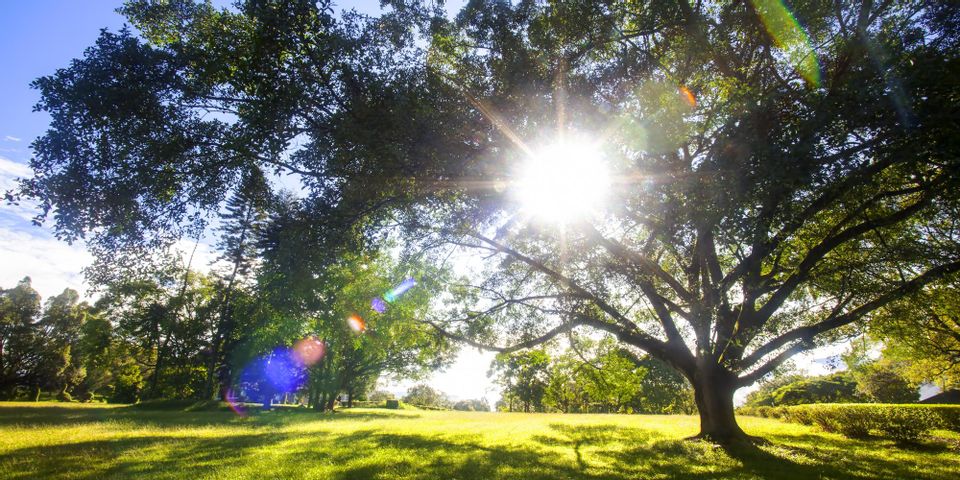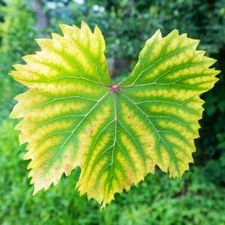FAQ About Iron Chlorosis in Trees

Iron chlorosis is a plant disorder caused by a mineral deficiency. The most common affected trees in Ohio include the pin oak, red maple, and river birch, and a few others. Chlorosis can be the primary cause behind a tree’s decay or just a symptom; regardless, a tree care specialist is necessary to determine the deficiency. Here are answers to some of the most common questions about iron chlorosis in trees.
Iron Chlorosis FAQ
What is it?
Iron chlorosis in trees causes a yellowing of the leaves with dark green veins. Early stages of chlorosis can occur on one branch, or they can affect the entire tree. The yellow color is the result of a lack of chlorophyll, and affected trees produce smaller and poorer quality fruits. Without proper tree care, the limbs or the entire plant may die.
What causes it?
Chlorosis is caused by an iron deficiency in the soil. Most often appearing in high alkaline soils with a 7.0 pH or higher, the soil’s high alkalinity chemically bonds with iron to form a solid that plants cannot draw through their roots. Chlorosis is more prevalent in conditions that restrict proper air ventilation in the soil. This is caused by plastic sheet mulching, compaction, and water saturation conditions. Chlorosis is more severe in conditions where the topsoil is removed from erosion or land leveling.
Can it be prevented with proper tree care?
 Treatment for iron chlorosis can be expensive, so it’s best to focus on preventing it before it occurs. If the plant has displayed yellow leaves for several years, or most of the branches are affected, then consider removing the plant, and planting a better-adapted species. A tree care expert can take soil samples to determine if the soil is the problem, or if another problem — such as insects, a pathogenic disease, herbicides, or oversaturation — is to blame. A tree’s root structure can be quite extensive. In fact, two trees side-by-side may not feed from the same soil, so it’s important to find the cause before starting a prevention routine.
Treatment for iron chlorosis can be expensive, so it’s best to focus on preventing it before it occurs. If the plant has displayed yellow leaves for several years, or most of the branches are affected, then consider removing the plant, and planting a better-adapted species. A tree care expert can take soil samples to determine if the soil is the problem, or if another problem — such as insects, a pathogenic disease, herbicides, or oversaturation — is to blame. A tree’s root structure can be quite extensive. In fact, two trees side-by-side may not feed from the same soil, so it’s important to find the cause before starting a prevention routine.
How can it be treated?
There are several methods of treatment for iron chlorosis. All are expensive. The application of a fertilizer treatment consisting of granular sulfur or liquid iron chleate can extend the life of the tree for 1 to 4 years. This is a temporary fix, but it gives tree care professionals time to find a more permanent solution. In most case, an injection of iron citrate or ferrous sulfate during early spring has the best chance of reviving the tree.
If you notice leaves are yellowing prematurely, or complete branches with no growth, then you may be battling iron chlorosis. Contact Dave & Aaron Stang’s Certified Tree Care, and have one of their expert-certified arborists take a look. Located in Cincinnati, OH, these tree care professionals serve Hamilton, Warren, Butler, and Clermont counties. Visit their website for a list of services or give them a call at (513) 936-9777.
About the Business
Have a question? Ask the experts!
Send your question

